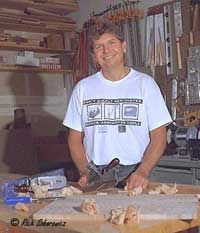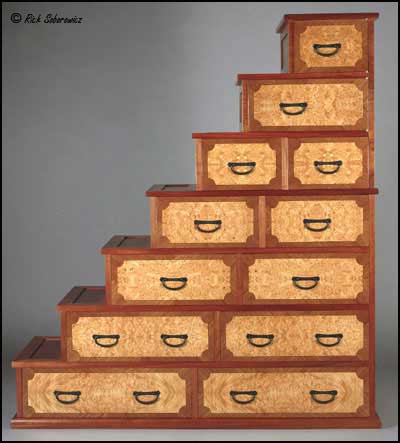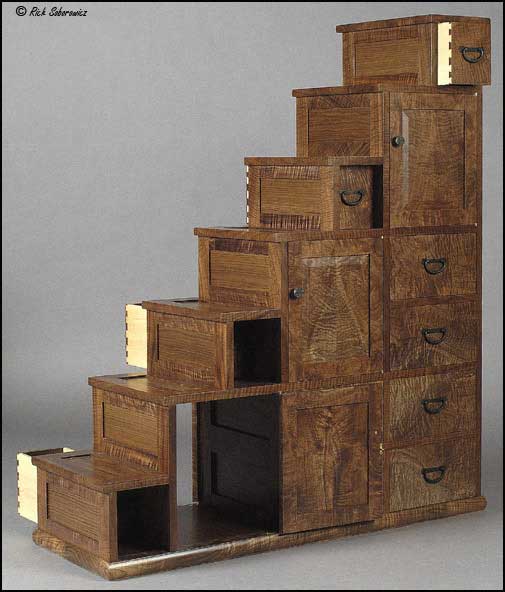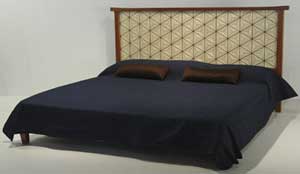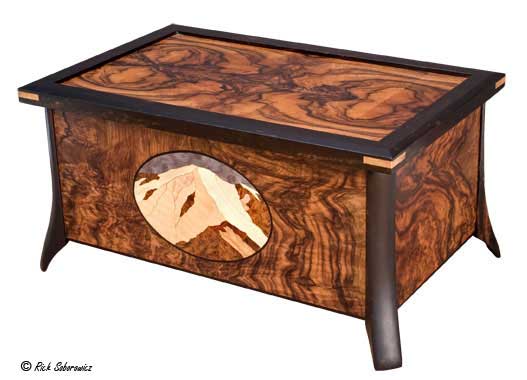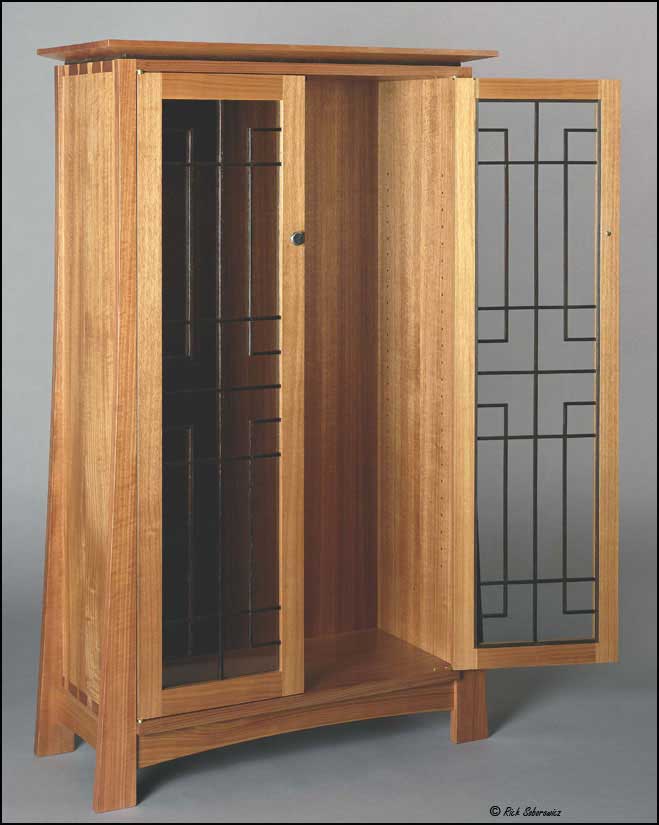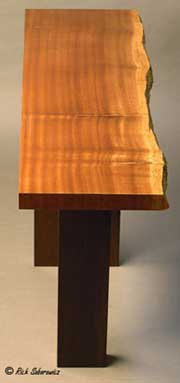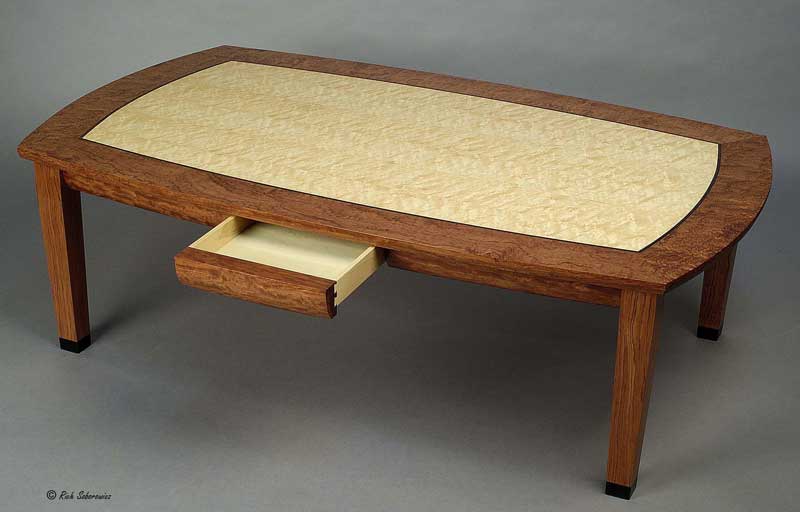
“I grew up on a dairy farm in Wisconsin,” Rich Soborowicz recounted when I asked him how he got into woodworking. “On a farm, you’re always fixing things and doing things with your hands. I remember watching my dad take green wood and bend it into a rake, and [I] found it amazing.
“After getting a degree in animal husbandry from the University of Wisconsin, I managed farms in Alaska and Wisconsin, then went back and got an IT degree and worked for large companies until 2007. However, woodworking, which had started as a hobby for me in back in 1988, eventually became something more. I got a business license in 1993 and decided to start selling some of my work.
“I like handling problems, and in the beginning, IT offered that, but in larger companies, that was limited. I also like working alone. With wood, there are a lot of problems to solve, especially if you work, as I do, in a one-man shop. I started woodworking mostly full-time in 2000 and relegated my IT work to part-time. I finally gave up my second job to be a full-time woodworker in 2007.
“I started out doing Shaker and Asian, both of which I feel have clean, simple lines. Those lines tend to show up throughout my work. Most of my work is custom, but I do some limited edition pieces, such as the Kumiko bookcase. Multiples are sometimes individual pieces that use elements of other pieces. For instance, I often do designs with differences in size and woods. However, the fact that a design thread runs through my work blurs the line between individual and multiple pieces.
“Another multiple, one that actually started out as a one-off, is a dresser in the form of a Tansu step chest. I made it originally for myself, and liked it so much that I made another for a show. Others followed. Each drawer is four quarter book-matched figured maple burl. Surrounding it as a radiating veneer is makore, as is the rest of the case. On the sides, the veneer has been matched in four quarter segments with the sapwood intact to form a diamond amidst four squares. A similar Tansu step chest made of walnut, which was meant as a room divider, has drawers and doors that open from both sides. The drawers center themselves thanks to embedded rare earth magnets.
My Sankaku bed started out as a one-off for a show, but I eventually made more. I liked the first one so much that I was wishing it would not sell because I wanted it for myself. It sold, though, so I made another, and others followed. The pattern on the headboard is made of figured sycamore and makore. The pieces are all isosceles triangles assembled so that they form equilateral triangles, six-pointed stars, various sizes of hexagons and three-dimensional cubes, all formed from one basic building block. Not only does it create a lot of shapes and a three-dimensional appearance, it shimmers as well. The design fits within the piece such that the size of the triangles must be changed when the headboard size changes. In other words, a king and a queen size must have different sizes of triangles so that the pattern comes out right in both.
“Even in my pieces that have simple lines, those lines often sport subtle curves or variations. The legs will have a simple taper, and both sides and aprons are frequently curved. One table I made with a slab of live edge ribbon sapele has an extremely simple black base. The segments of the base, which look like flat planks, are wenge, but what is unusual is that each one is a different size. Further, the top is not centered on the base; it is offset. To me, the piece is about proportion and deconstruction. What appears very simple is actually rather complex.”
One piece that caught my eye turns out to have a much deeper story behind it. “In December, my brother passed away very suddenly,” Rich explained when I asked about an inlaid box. “He was a mountain climber with over 149 peaks to his credit. To honor him, I built an urn for his ashes with an inlaid image of Mt. Rainier on the forward side. He had ascended that mountain more than 20 times.
“Here in the Puget Sound area, where I currently live, Rainier represents something spiritual. On a clear day, when you look at that majestic mountain it takes your breath away. Mt. Rainier stands alone rather than as a part of a mountain range, and that, too, lends majesty to it. Oddly, the veneer on the top of the box, which is book-matched walnut, has the image of two skulls within the figure, though that was not planned. I noticed it only after the piece was made.”
In addition to sharing his story as a woodworker, Rich had some wise advice, and a bit of commentary about the path he’s taken.
“Enjoy life to the fullest,” he suggests. “I’ve always enjoyed everything I’ve done. It took a lot for me to quit IT and do woodworking. Like many, I put up imaginary obstacles to being a full-time woodworker, but I eventually realized they can all be overcome. Granted, the money is not as good for a woodworker, but the creative joys overshadow that.”
